| 1 | Children’s python |
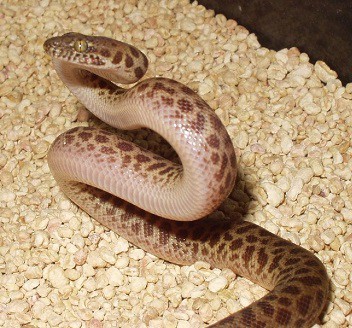
A harmless snake of Australia’s north. If you asked this snake its favourite meal, it would probably reply “food”. Children’s pythons live along Australia’s north coast, meaning Queensland and Northern Territory. They appear in varied habitats, including forest, scrubland, fields and woods. Children’s pythons are named because they’re only little. At 1-1.5 metres, they’re nowhere near the brute size of a scrub python. In compensation, nature has gifted them with the ability to eat almost anything.
According to a 1990 study on 189 wild children’s pythons, their diet consisted of 36% mammals, 26% reptiles, and 33% amphibians. Like most of this list, children’s pythons are incredibly easy to feed in captivity. Simply fling them a defrosted pygmy mice, and they’ll be happy for days.
Because of their diet flexibility and calm temperament, children’s pythons are regarded as perhaps the ultimate snake for a beginner keeper. In captivity, they can exceed 30 years old. Eating frogs is rare in pythons, and children’s pythons eat Copland’s rock frogs and ornate burrowing frogs.
| 2 | Jamaican boa |
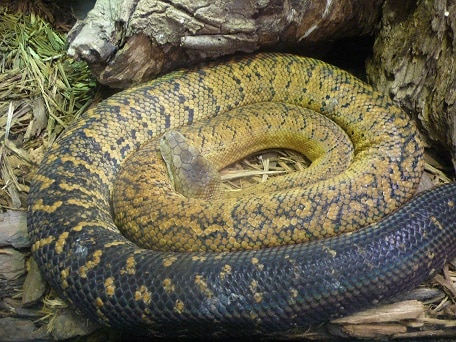
A slow, steady species found only on its namesake island. The Jamaican boa is a harmless constrictor which moves just 10 metres per day on average, and is restricted to forests. Due to agricultural takeover, they’re becoming rarer, and occupy just 20 surviving pockets across Jamaica. Yet a flexible diet is one of their big advantages.
The Jamaican boa is a black hole which grinds along sucking up parrots, black rats, chickens and Jamaican twig anoles alike. They have a legendary reputation for hunger, slithering into a coop and wolfing down 3 chickens, with legends of 10 chickens spilling out of a single stomach during the colonial era. They also hunt bats by dangling from cave roofs, although they’re far less skilful at this than Puerto Rican boas and Cuban boas.
Black rats are their favourite prey, closely followed by parrots such as yellow-billed parrots. Jamaican boas are actually most active during the parrot breeding season, March-July. They also eat Jamaican crows and Jamaican woodpeckers, both native species. Jamaican boas rule the forest, and easily exceed 2 metres, yet are surprisingly calm in captivity, unlike the Puerto Rican boa.
| 3 | Mexican dusky rattlesnake |
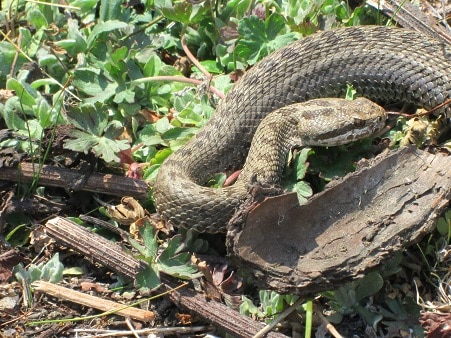
There’s over 50 rattlesnake species worldwide, and some have specialised diets. Twin spotted rattlesnakes eat 74% reptiles, while red diamond rattlesnakes eat 90% mammals. The Mexican dusky rattlesnake is one of the most flexible, eating mammals, reptiles and even frogs, which is rare for rattlesnakes.
Crotalus triseriatus lives solely in southern Mexico, and in a narrow region: highlands of the Transverse Volcanic Cordillera. They’re most common at altitudes of 2700-3350 metres in pine-oak and coniferous forests. The Mexican volcano mouse is a favourite prey, but they also eat crevice swifts, eastern cottontail rabbits and light-bellied bunch grass lizards. They don’t object to eating fellow dusky rattlesnakes either.
This rattlesnake isn’t monstrously deadly, but possesses the usual dangerous hemotoxic venom of its kind. A Mexican dusky rattlesnake bite may cause haemorrhaging and damage to internal organs such as kidneys. Never interrupt their all you can eat buffet.
This 60cm rattlesnake has a food is fuel philosophy. As long as a creature contains protein and fat which it can extract calories from, the Mexican dusky rattlesnake will be satisfied.
| 4 | Brazilian smooth snake |
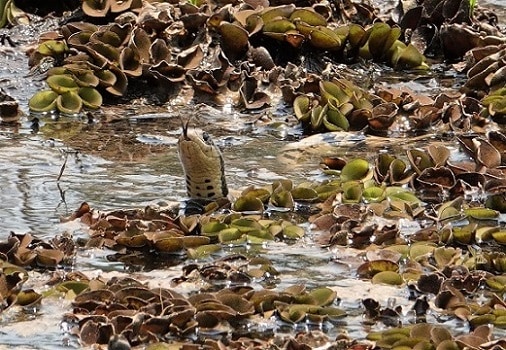
The Brazilian smooth snake would be the perfect dinner guest in your home, as it never complains about the meal placed in front of it. In fact, it’s debatable whether Brazilian smooth snakes even notice the precise meal they’re eating.
This is an Amazon rainforest species, which sticks to rivers and marshland with an abundance of water to glide through. Brazilian smooth snakes patrol river shores menacingly, and swim through the centre to locate frogs. At 3 metres, this snake is a complete bully. They slither through the rainforest and aggressively swallow anything that looks remotely edible.
Brazilian smooth snakes have no love for humans and will attack them if they get too close. Despite this, they’re sought after in captivity, and their flexible diet is partly why. Brazilian smooth snakes lean towards frogs, but will eat most things: 41.4% amphibians, 20% reptiles, 15.7% fish, and 14.3% mammals according to a study from northeast Argentina. In captivity, they can be fed mice for life with little issue, once they’ve been weaned onto them with an applied frog scent. With a maximum of 3.5 metres, this thuggish snake is one of the Amazon rainforest’s largest.
| 5 | Indian cobra |
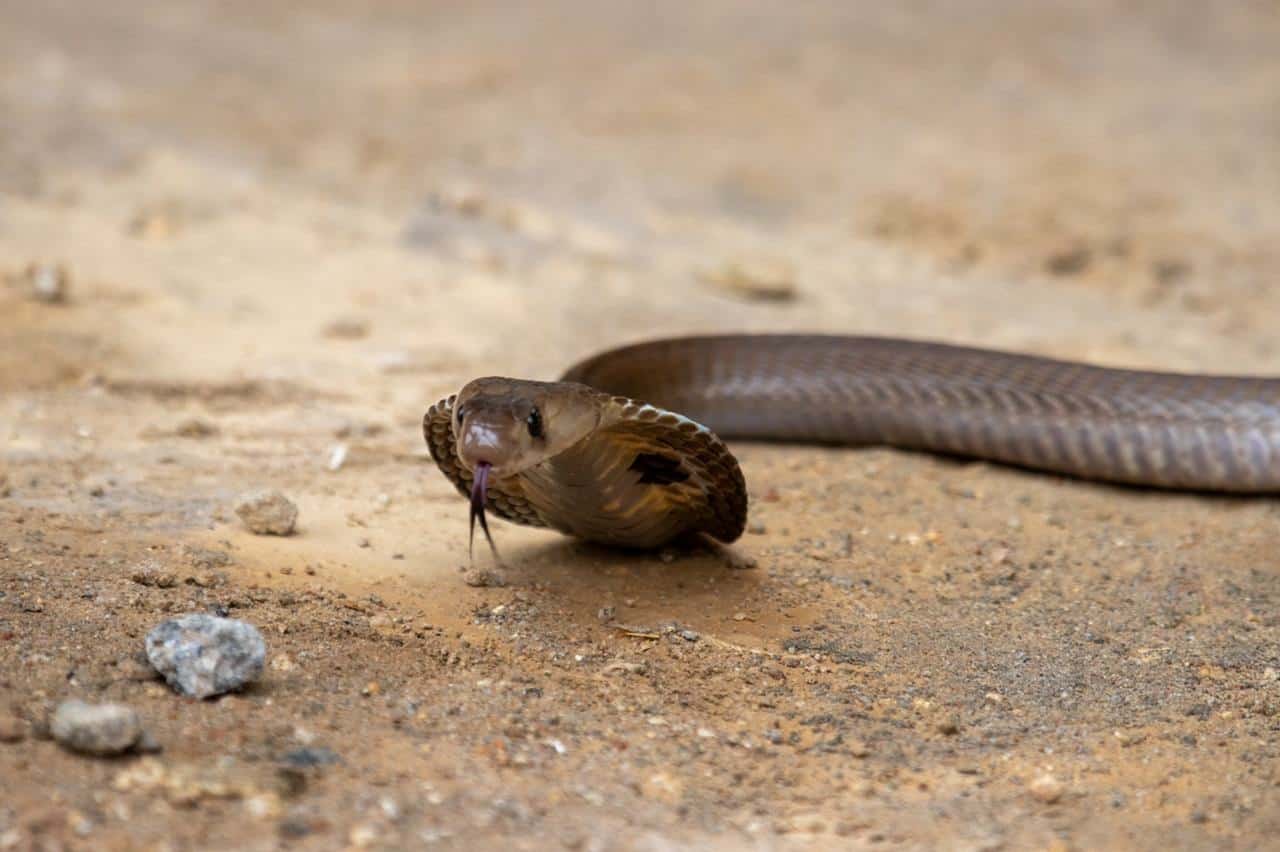
A living, breathing vacuum cleaner which mindlessly swallows prey, barely tasting them, before moving onto its next meal while barely remembering the previous. Indian cobras have a slight leaning towards mammals, but any living creature will do, limited of course by body size (they’d eat you if they could).
Detailed studies are surprisingly few, but Indian cobras have been witnessed eating striped palm squirrels, Asian toads, black rats and spotted house geckos. Indian cobras are such mindless eaters that they’ll even swallow eggplants. This took place in Madhya Prayesh, India, and the eggplant was rotten with a foul odour. The Indian cobra regurgitated it and left the scene, but then changed its mind and swallowed it again.
This venomous killer is impulsive in every way, which is partly behind their notorious reputation. Indian cobras also eat fellow snakes, with confirmed prey being Bhupathy’s shieldtail snakes, sharp-nosed vinesnakes, and Russell’s vipers. The latter is severely venomous, yet the Indian cobra didn’t roll over and die, so they evidently have toxin deactivation systems. Indian cobras measure 1.5 metres, and are very common across India.
| 6 | Road guarder |
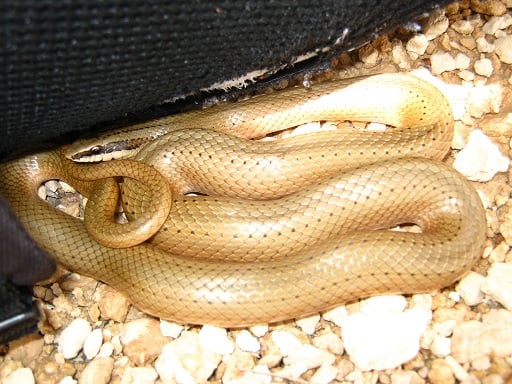
This Central American snake has an endless list of prey. Mammals include the house mouse and Gaumer’s spiny pocket mouse. Reptiles include rainbow ameivas and black spiny-tailed iguanas. Confirmed amphibians include yellow toads, gulf coast toads, and common Mexican tree frogs. They also have a taste for snakes, including Tuxtlan coral snakes and variable coral snakes.
Road guarders measure 120cm and have vertical stripes running down their body similarly to a garter snake. Its venom triggers spontaneous haemorrhages and contains 55.6% metalloproteineases. At least 26 toxins have been identified in the mixture. Road guarders stick to the ground, climbing trees occasionally and using vacant mammal burrows for shelters. Though they eat virtually anything, they have a slight leaning towards lizards and their eggs.
The road guarder doesn’t even stop at dead bodies. In June 2014, one was observed swallowing the corpse of a common Mexican tree frog, which was “in a remarkable state of decomposition”. It wasn’t still fresh, it was now in zombie territory. A coral snake wouldn’t touch this with a barge pole, but the road guarder thought it was perfectly acceptable.
Why they became such an unfussy snake is a mystery, with other snakes specialising in frogs or even snails. It’s likely that these snakes were weaker than the road guarder, and were forced to occupy a narrow niche. If a sibon snail eater fought a road guarder on equal terms, then the road guarder would always win, with its venom, agility and aggression.
| 7 | Black racer |
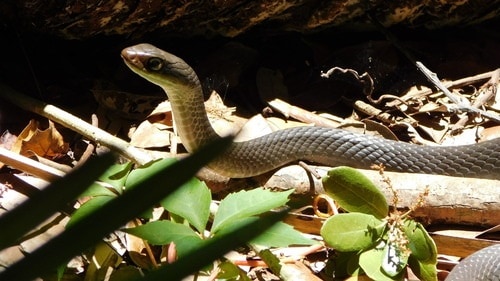
A 1.5 metre snake common to the entire eastern USA. This species is like the Indian cobra except non-venomous. They couldn’t care less what they eat as long as it contains viable calories. They’ll swallow a shrew to the left, gobble down a frog to the right, greedily eat a lizard, then blast over to their tree hollow and spend 3 hours power napping.
Black racers are one of the most manically hyperactive snakes. They move hundreds of metres per day and don’t even bother constricting properly; they just pin prey to the floor, maybe a pavement outside a grocery store. In Florida, black racers are the snake most commonly seen by ordinary people.
This species also eats fellow snakes, with ring-neck snakes being one confirmed. With small prey, they don’t bother pinning; they just swallow them whole, and instantly forget what just happened. Black racers are flexible, but more common in open areas. They’re skilful tree climbers and often raid bird’s nests for eggs.
| 8 | Bothrops pauloensis |
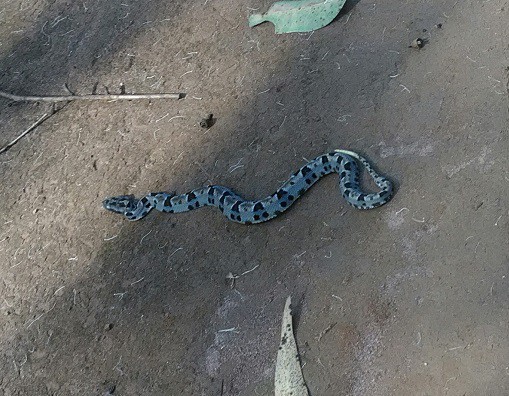
A snake of cerrado in southern Brazil: dry, open savannahs with wispy grass and decent amounts of bushes. Bothrops pauloensis prowls around open horizons, scaring animals from straying close with its menacing appearance, and injecting a hemotoxic venom if they do.
This snake’s venom contains serine proteases, L-amino oxidases and metalloproteinases, causing catastrophic tissue damage and lasering in on the kidneys. Most worryingly, they’re a threat to virtually all neighbour animals in the cerrado (except maybe a jaguar). Bothrops pauloensis will eat almost anything, including other snakes, with Reinhardt’s burrowing snake being confirmed. Specific prey include blue-black grassquits, ocellated tegus, Miranda’s snouted tree frogs, agile gracile opossums and delicate vesper mice.
A study from southern Brazil found the following diet breakdown: mammals 35.4%, lizards 23.1%, amphibians 20.0%, birds 3.1%, snakes 7.7%, and centipedes 10.8%. This is probably the most flexible Bothrops pitviper of all 48. Its cousin the crossed pitviper, also found in southern Brazil, eats 100% mammals, with very stiff tastes. Bothrops pauloensis is truly the king of cerrado savannah, and unfortunately, they’re not using their powers for good.
| 9 | Eastern brown snake |
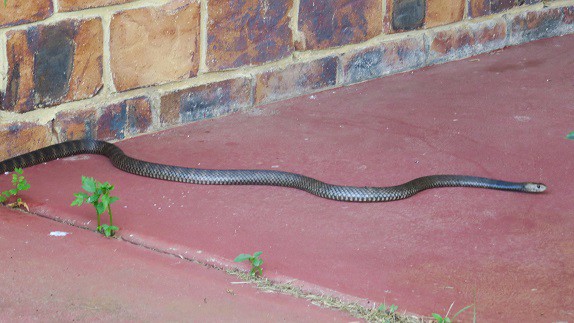
This Australian venomous snake leans towards reptiles for its prey, yet anything is fair game. The eastern brown snake has the 2nd most potent venom of any land snake, counterbalanced by a low yield of 4-10mg per bite. They contain a unique neurotoxin called textilotoxin and their signature is fang marks 1.1cm apart.
In 1991, a survey found the following diet breakdown: 49% reptiles, 39% mammals, 9% frogs, 2% birds and 1% reptile eggs. The reptile bracket also contained 3.7% snakes, and eastern brown snakes are confirmed to prey on mud adders, bevel nosed ground boas, and each other. The study shows that this common menace has a favourite, yet will ultimately give anything a try, as long as it roams Australian soil.
Eastern brown snakes don’t rule out cannibalism, which is weird given that this is a communal snake. Up to 17 Pseudonaja textilis have been found nestling under a stone slab together, entwined to preserve warmth. Eastern brown snake preferences shift with age. Younglings prey reptiles, while adults prefer mammals, sprinkling in whatever other tasty treat they feel like.
| 10 | Cape house snake |
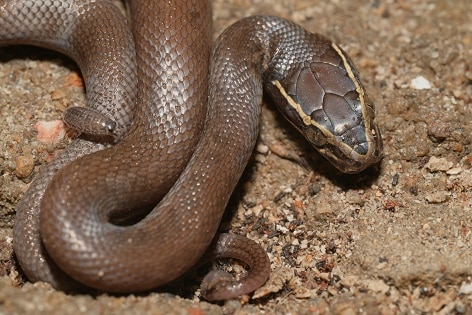
The cape house snake is ubiquitous in South Africa and Zimbabwe. They appear in woods, fields and gardens alike, often when people lift up old debris. They lack venom and their mock strikes have no real threat behind them. The big advantage they have is eating almost anything. Cape house snakes are popular in captivity worldwide, both for their docile nature and flexibility in eating. Feeding them is a no-brainer; just toss in the most basic pinkie mouse sold by any reptile care company.
In the wild, cape house snakes eat mammals like hairy footed gerbils, black rats and South African hedgehogs. Reptiles include tropical house geckos and black-necked agamas. Birds include house sparrows and cape weavers. Amphibians are their least favourite prey, but they’ve still been recorded eating cape river frogs and Drakensberg frogs.
Being able to eat almost anything is a massive survival advantage as a snake. Several of the least fussy are also extremely common – boa constrictors, black racers, Indian cobras. The cape house snake too is extremely common, appearing in every single southern African (Botswana, Mozambique, etc).
